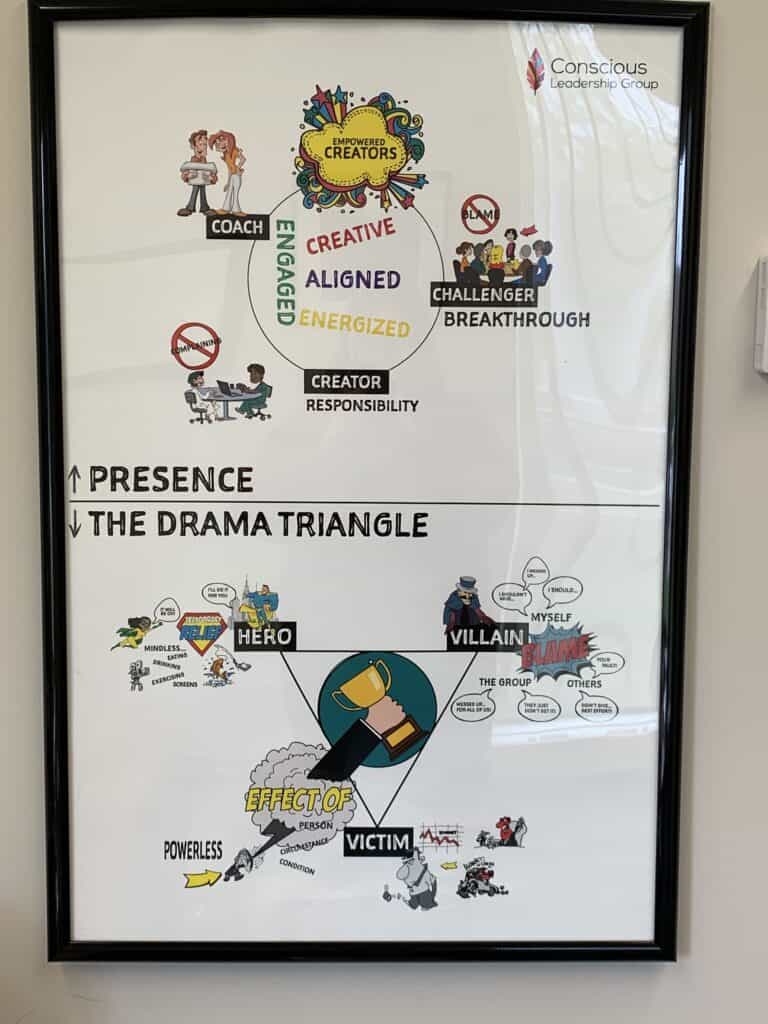The Problem: Nice Leadership is Toxic Leadership
Many well-intentioned leaders focus on making their workplaces as “nice” as possible. After all, if we’re going to spend almost half our waking hours as part of a team, why not make that time at least somewhat pleasant?
It’s a tempting approach, especially to a leader who is all too often refereeing disputes, delivering bad news, and generally saying “no”. Most of us don’t like to disappoint our people or create unnecessary conflict. However, it’s too easy for a leader focused on being humane to drift into toxic leadership habits.
“Nice” leadership is much more dangerous than it seems in the moment. It’s the approach of not rocking the boat, not upsetting another person, not discussing a problem while it’s small, and risking burnout by saying yes to everything. Your understandable efforts to promote harmony can actually drive important problems underground, where they can become fester and become toxic threats.
In a nutshell, Nice Leaders ignore challenges in the hopes they blow over. And in fairness, sometimes they do. However, in my experience they’re just as likely to blow up.
Six daily practices to avoid toxic leadership
The good news is that there’s a surefire way to avoid the toxicity of “nice” leadership—and that’s by embracing Kind leadership instead.
I did a whole workshop on the interplay of nice and kind leadership, and you can get access to the replay by signing up for my email list.
The workshop’s worth the investment of an hour, but I’ve pulled out six key tips you can implement right now to detoxify your leadership habits and practices.
Get curious when things are calm
The most toxic and drama-ridden times of my career haven’t been the moments of maximum strain or workload. Normally they occur before or (especially) after the crisis, when people either are uncertain about what is looming or are finally venting all the little things they bottled up when times were tough. This phenomenon can come as a gut-punch to the unprepared leader who thought the “worst” was past.
Don’t get paranoid, but do acknowledge to yourself that surface calm can sometimes hide obstacles under the waterline. Keep an eye out for the small eddies and ripples—an eye-roll in a staff meeting, or a sarcastic aside in the break room. And then ask questions—not accusing, just curious. Most of the time it’ll be nothing that needs your attention, but sometimes you can catch a small misunderstanding or frustration before it gets big.
Redirect toxic drama into constructive conflict
One of my personal rules when a person is looking to vent about some drama or situation is, “are they looking for comfort or solutions?” Now, I’m fine with listening to some venting in moderation, if only in the interest of not being a hypocrite, and establishing myself as a safe person to come to for advice.
However, at a certain point in the conversation, and you’ll learn it with experience, ask your team member if they’re ready to shift toward finding a solution to the conflict. If they are, that’s wonderful. If not, politely but firmly change the subject or end the conversation. Avoiding toxic leadership in yourself often requires holding others’ toxicity at arms length.
Be a Coach, not a Hero

As I mentioned in my overview of how to be a kind leader, the Conscious Leadership Group is a major influence on both my daily leadership practice and the work of the Guild. Above is a poster of their depiction of the Drama Triangle that I keep in my office, and let’s just say it’s not only there to remind visitors.
As you’ll see, there are actually two triangles tied in to whether you feel like you have agency over what is going on, or if life is something happening to you, each set of behaviors coordinating with the other.
I’ve long nurtured a theory that educational leaders and others in the helping professions tend toward Hero Mode when times are stressful. Sometimes the only way you can feel as though you’re making a difference in your job is to find a problem and solve it, whether or not it was your place to fix it in the first place. That’s a dangerously toxic leadership trap.
However, the coordinating point on the empowered triangle is that of “coach”, where you work to empower the person whose responsibility it truly is to fix their problem, rather than swooping in to save the day to smooth things over and keep the situation “nice”.
So next time you discover a problem on your team, before you try to take over, ask yourself how you can help the person asking for assistance to grow in their own abilities?
Leave some gas in your tank
This one’s pretty self-explanatory. You have only so much energy to expend in your job, and the less you have, the more likely you are going to do something toxic and short-sighted.
As much as possible, I leave a little slack in my schedule and to-do list to walk around, have a serendipitous conversation, or just think. It’s astonishing how often I’ll have some insight or bump into someone and have a meaningful conversation.
Make new Friends, but Keep the Old
First, bonus points to all the former Girl Scouts who immediately got that old ditty stuck in their heads.
Second, one of the best ways to identify areas of unsurfaced conflict or tension is to bring in some fresh eyes on the situation. They will see things you don’t, understand dynamics you’re too close to interpret, and often make a passing remark that changes your whole perspective on a situation.
That’s not because you’re a “bad” leader, but simply because they have a different, more distant angle. You may not like everything they have to say, or even agree with it, but you should still listen. As uncomfortable as their words may be, they are doing you a kindness.
Accept that Changing the World involves Change
For all but the most adventurous of us, we much prefer to dream of change than to go through the messy work of actually enacting that change. Our decisions as leaders have the capacity to change the world, or at least our small corner of it. However, they also always have unexpected consequences—some for the better, some for the worse, most a mixture of both.
When in the headspace of “nice” leadership, you will be tempted to deny or soft-pedal this reality. Worse, you may abandon change at the first signs of resistance. Now, I’m not saying you shouldn’t change directions midstream if circumstances suggest a better direction. However, if the destination is still where you think your organization should go, then the only way past the pain is through the pain. It won’t be pleasant, but it is kind.
Avoiding Toxic Leadership: Final Thoughts & Next Steps
When you get right down to it, nice leadership is easy, and kind leadership is hard. That’s why the former is so seductive and the latter so painful at times. It can be challenging to know what is right in a given situation, and heartbreaking to do what is right. But the rewards can be found at the end of the journey.
Rather than being mired in polite lies and toxic drama, the leaders and teams who operate from a stance of kindness have a firm foundation of humanity and effectiveness that can see them through any crisis. I saw it first in my own journey, and since then in the journeys of leaders I have coached. When shifting from nice leadership to kind leadership, you pay the price up front. But at the end of the journey, the view will be worth it.
If you want to dig deeper into the dynamic of “nice” leadership vs kind leadership, enter your email below for a workshop replay on that very subject. You’ll also get access to all of my workshops, past and future. Just sign up below!
Stay Kind Now,
Sarah



